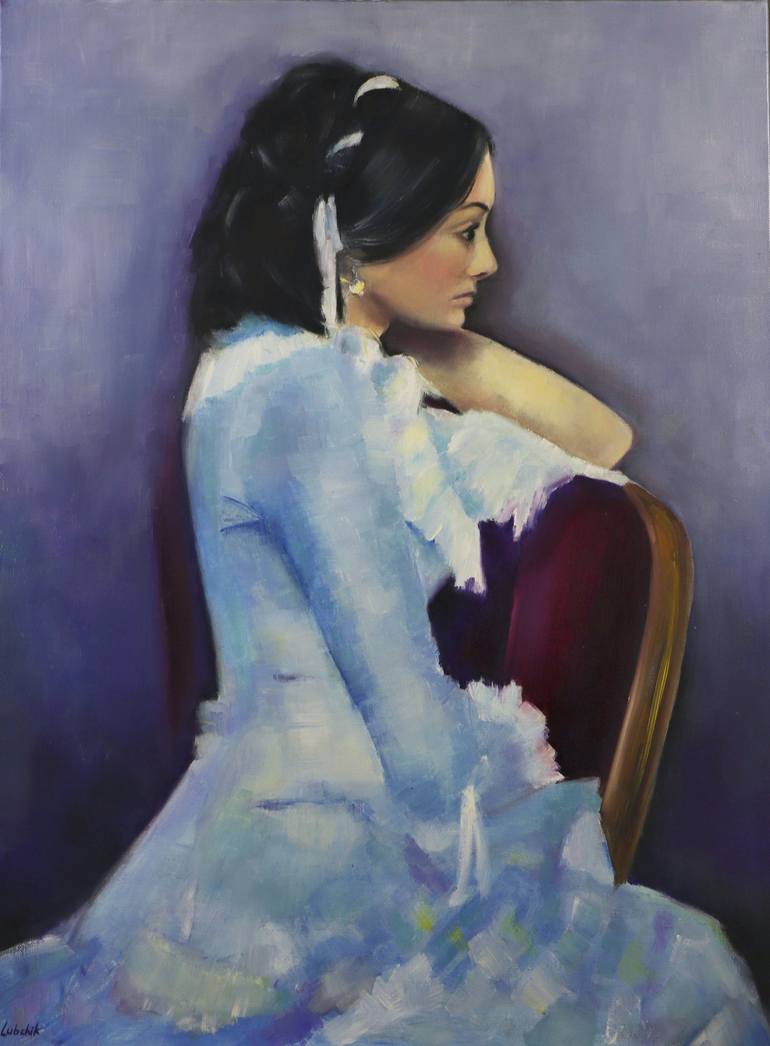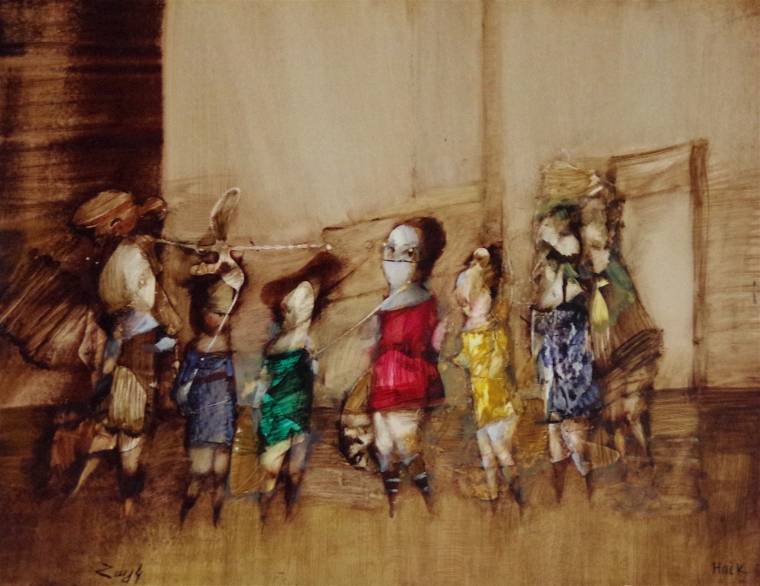Why Figurative Oil Painting Remains an Ageless Choice for Artists
Why Figurative Oil Painting Remains an Ageless Choice for Artists
Blog Article
The Evolution of Metaphorical Oil Paint: Comprehending Its Historical Relevance and Modern Interpretations
The advancement of figurative oil paint functions as an engaging lens via which to examine the interaction between creative expression and historical context. From the precise naturalism of the Renaissance to the stirring power of the Baroque, each age has added layers of significance and technique to this classic tool. Contemporary musicians, attracting from this rich heritage, are currently reinterpreting the human number in manner ins which challenge conventional stories. As we discover these changes, one should consider just how the dialogue in between present and previous informs not only creative practice yet also social reflections in a significantly complex globe.
Origins of Metaphorical Oil Paint
The beginnings of metaphorical oil paint can be traced back to the early Renaissance in Europe, especially in the 15th century. The growth of oil paint allowed for higher deepness of color and information, enhancing the realism and vibrancy of their work.

In this transformative era, figures were commonly illustrated within contextually abundant atmospheres, showcasing not only their physical qualities however also their mental states. Leaders such as Jan van Eyck and Titian took advantage of the tool's flexibility, employing layering strategies to attain brightness and texture. This innovation promoted the representation of complex materials and the subtleties of complexion, contributing to the growth of portrait and narrative scenes.
Moreover, the Renaissance emphasis on humanism cultivated a recognition for individuality, which in turn affected artists to develop more relatable and dynamic figures - figurative oil painting. Because of this, figurative oil paint emerged as an effective car for narration and emotional involvement, preparing for future imaginative motions and designs
Secret Historic Movements
Substantial historical motions have formed the advancement of figurative oil paint, each contributing special philosophies and methods that increased the medium's opportunities. The Renaissance noted a critical moment, stressing realistic look and the human kind, with musicians like Leonardo da Vinci and Michelangelo pushing the borders of anatomical precision and perspective. Following this, the Baroque age brought significant contrasts of light and shadow, exemplified by Caravaggio, that instilled spiritual themes with intense emotionality.
The 19th century presented Romanticism and Realistic look, where artists such as Delacroix and Courbet challenged timeless perfects, concentrating on private expression and day-to-day life. The advent of Impressionism better transformed the medium by stressing the results of light and color, resulting in a departure from standard depiction.
In the very early 20th century, movements like Expressionism and Cubism redefined figurative painting with abstraction and the expedition of psychological deepness. Each of these activities not just mirrored the societal changes of their times but also laid the foundation for contemporary interpretations. The interplay between these historical movements has created a rich tapestry of styles and viewpoints, influencing contemporary artists in their quest of catching the human experience on canvas.
Methods and Materials Evolution

Throughout the Baroque period, techniques such as chiaroscuro and sfumato emerged, improving the emotional vibration of figurative structures. Artists began to experiment with lusters and impasto, controling texture and brightness. By the 19th century, innovations like using pre-mixed paints in tubes transformed access, allowing musicians to repaint en plein air and catch the short lived effects of light.
The 20th century experienced the introduction of synthetic pigments and tools, which expanded the combination and modified the consistency of oil paints. Additionally, the expedition of new application methods, such as scheme knives and brushes of varying stiffness, more varied artistic expression. Collectively, these innovations reflect the developing connection in between products, techniques, and the artistic vision intrinsic in metaphorical oil paint.

Contemporary Analyses
Contemporary analyses of metaphorical oil paint show a dynamic dialogue between tradition and development, where artists challenge established norms and explore varied motifs. This advancement shows up in different methods, as contemporary artists blend timeless strategies with modern-day principles, usually resolving social, political, and individual narratives.
Numerous practitioners attract ideas from historic works, yet they instill their items with contemporary perspectives, utilizing the human type as a car for discourse on sex, identification, and culture. Artists progressively experiment with abstraction, distortion, and multimedias, which permits a wider interpretation of the number and its context.
Furthermore, making use of brilliant color palettes and unconventional make-ups typically serves to interfere with conventional watching experiences, provoking crucial involvement from audiences. This change in focus expands beyond aesthetics; it mirrors a growing recognition of the complexities of human experience in an interconnected globe.
As metaphorical oil painting remains to develop, it continues to be an important tool for exploring the subtleties of modern life, symbolizing both a regard for heritage and a commitment to modern idea. The result is an abundant tapestry of expression that reverberates with the complexities of the contemporary human problem.
Impact on Modern Art
The impact of figurative oil painting on contemporary art is extensive, as it has constantly influenced a myriad of imaginative movements and practices throughout the 20th and 21st centuries. From Expressionism to Surrealism and beyond, the exploration of the resource human number has actually continued to be a main motif, allowing artists to convey complex emotions and narratives. This emphasis on figurative representation has caused a re-examination of standard strategies, causing cutting-edge strategies that mix realistic look with abstraction.
In addition, modern musicians have embraced metaphorical oil paint as a method to resolve political and social concerns, making use of the tool to challenge understandings of culture, identity, and sex. The resurgence of interest in metaphorical operate in current years shows a yearning for connection in an increasingly electronic globe, where human experience and emotion are critical.
Additionally, the discussion in between figurative oil painting and modern-day art appears in the works of artists such as Kehinde Wiley and Jenny Saville, that make use of historical references while infusing their this content items with contemporary relevance. Inevitably, metaphorical oil paint proceeds to form and redefine modern creative expression, underscoring its long-lasting relevance in the art world.
Verdict
The development of metaphorical oil painting underscores its historic value and versatility throughout various artistic motions. Inevitably, figurative oil painting stays an essential medium for checking out the human experience, resonating exceptionally in today's electronic landscape.
The development of metaphorical oil painting serves as a compelling lens you could try this out with which to check out the interplay between creative expression and historical context.Substantial historic activities have shaped the development of figurative oil painting, each contributing unique viewpoints and methods that broadened the tool's opportunities.As historic activities formed the trajectory of metaphorical oil paint, the strategies and products used by artists have likewise undergone substantial transformations. figurative oil painting.The impact of figurative oil painting on modern art is profound, as it has actually continually inspired a myriad of imaginative activities and techniques throughout the 21st and 20th centuries.The advancement of metaphorical oil painting emphasizes its historic significance and flexibility throughout different creative movements
Report this page